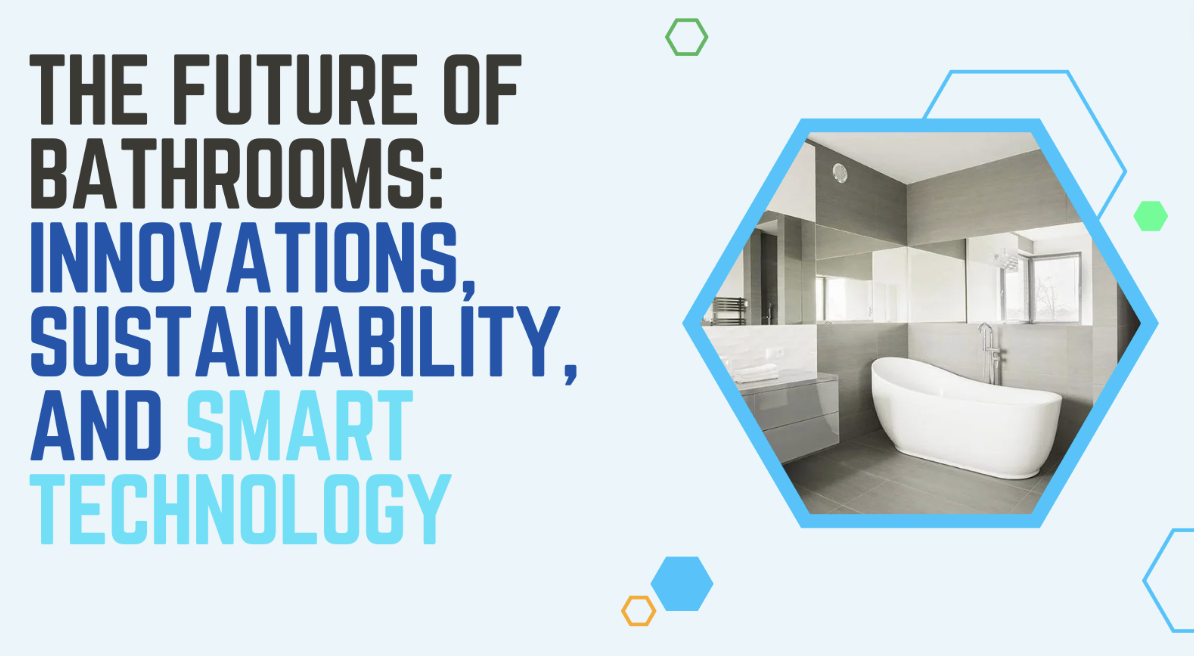In the ever-evolving landscape of technology and design, even the most mundane aspects of our daily lives are subject to innovation. The bathroom, once a purely utilitarian space, is now becoming a focal point for cutting-edge advancements. From sustainable practices to smart technologies, the future of bathrooms promises a revolution in how we perceive and interact with this essential part of our homes.
Sustainable Practices
1. Sustainable Materials
The bathroom industry is embracing eco-friendly materials, recognizing the importance of reducing its environmental footprint. Manufacturers are increasingly turning to materials like bamboo, recycled glass, and reclaimed wood for bathroom fixtures and accessories. These sustainable alternatives not only contribute to the well-being of the planet but also add a touch of natural elegance to the bathroom.
Also See: Shower Repairs Melbourne
2. Water Conservation
Water scarcity is a growing concern worldwide, prompting a shift towards water-efficient bathroom fixtures. Advanced toilets with dual-flush options, low-flow faucets, and smart showers that adjust water usage based on real-time needs are becoming staples in modern bathrooms. These innovations not only help conserve water but also contribute to lower utility bills, making them an attractive choice for eco-conscious consumers.
Smart Technologies
1. Smart Toilets
The traditional toilet is getting a high-tech makeover with the introduction of smart toilets. Equipped with features like heated seats, built-in bidets, and customizable lighting, these toilets offer a luxurious and personalized experience. Some models even include health monitoring capabilities, providing data on hydration levels and other vital signs. As technology continues to advance, we can expect smart toilets to become an integral part of the modern bathroom.
2. Connected Showers
Smart showers are taking center stage, offering users the ability to customize their shower experience through smartphone apps. From adjusting water temperature to controlling water pressure and even pre-setting shower durations, these connected showers provide a personalized and efficient bathing experience. Additionally, some models incorporate water-saving features, contributing to both convenience and sustainability.
Aesthetic Evolution
1. Minimalistic Design
Bathrooms are moving away from cluttered and ornate designs to embrace minimalism. Clean lines, neutral color palettes, and uncluttered spaces create a sense of tranquility and simplicity in the bathroom. Minimalistic design not only enhances visual appeal but also promotes a more relaxed and organized atmosphere, contributing to the overall well-being of users.
2. Inclusive Design
The future of bathrooms is inclusive, considering the diverse needs of users. Designers are incorporating elements like adjustable-height fixtures, non-slip surfaces, and easy-access storage to accommodate users of all ages and abilities. This approach ensures that bathrooms are not only aesthetically pleasing but also functional and accessible for everyone.
Virtual Reality (VR) and Augmented Reality (AR)
1. Design Visualization
Virtual Reality and Augmented Reality are making waves in the world of bathroom design. These technologies allow users to visualize and interact with different design elements before making any physical changes. Designers and homeowners can experiment with various layouts, color schemes, and fixtures in a virtual space, streamlining the design process and reducing the likelihood of costly mistakes.
2. Virtual Showrooms
VR and AR are also transforming the way consumers shop for bathroom fixtures. Virtual showrooms enable users to explore a wide range of products without leaving their homes. By donning a VR headset or using an AR app, customers can virtually “try out” different sinks, toilets, and other fixtures in their own bathrooms, helping them make more informed purchasing decisions.
Hygiene and Health
1. Touchless Technology
In the wake of global health concerns, touchless technology is becoming a priority in bathroom design. Sensor-activated faucets, soap dispensers, and toilets reduce the risk of spreading germs and provide a more hygienic environment. This trend is likely to persist, with touchless technology becoming a standard feature in bathrooms to enhance cleanliness and user safety.
2. Air Quality Improvement
The future bathroom is not just about cleanliness; it’s also about air quality. Innovations like integrated air purifiers and humidity control systems are becoming more common in bathrooms. These features not only contribute to a healthier indoor environment but also add an extra layer of comfort and luxury to the overall bathroom experience.
Frequently Asked Questions
1. Are smart toilets difficult to install?
Most smart toilets are designed for easy installation and can be set up like traditional toilets. However, it’s recommended to hire a professional plumber for installation to ensure proper functioning and to avoid any potential issues.
2. How do virtual showrooms work for bathroom fixtures?
Virtual showrooms utilize VR or AR technology to allow users to virtually place different fixtures in their bathroom spaces. This helps homeowners visualize the final look and make more informed decisions before purchasing.
3. Are sustainable materials more expensive than traditional ones?
While some sustainable materials may have a higher upfront cost, the long-term benefits, including environmental conservation and durability, often outweigh the initial investment. Additionally, as demand for sustainable options increases, prices are becoming more competitive.
4. Do touchless technologies in bathrooms require frequent maintenance?
Touchless technologies are designed to be low-maintenance. Regular cleaning is usually sufficient to keep these systems functioning optimally. Manufacturers provide guidelines for maintenance to ensure long-lasting performance.
5. Can minimalistic design be achieved on a budget?
Yes, minimalistic design can be achieved on a budget by focusing on simplicity, decluttering, and selecting cost-effective materials. DIY projects and repurposing existing fixtures can also contribute to achieving a minimalistic aesthetic without breaking the bank.
Conclusion
As we step into the future, the bathroom is poised to undergo a remarkable transformation. From sustainable practices that prioritize environmental responsibility to smart technologies that enhance convenience and efficiency, the future bathroom is a space that seamlessly integrates innovation with functionality.
As consumers increasingly demand a harmonious blend of aesthetics, sustainability, and technology, the bathroom industry is primed for a dynamic and exciting evolution in the years to come. Embracing this revolution promises not only a more comfortable and efficient daily routine but also a positive impact on our planet and well-being.

